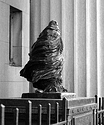These are some questions that I've had about developing, but just haven't found concise and accurate answers. I know the answers are out there, but finding them in one place seems to be difficult.
It should be assumed that all questions are using one type of (fresh) film at rated box speed, and one developer at any one of the given mix ratios (fresh batch). Ie, an answer shouldn't be: "use Developer X or Film Y to achieve that", but altering the developer in a specific way could be a response: "Use a lower dilution strength".
All questions assume a correctly exposed (in camera) negative. This is
specifically about what the differences in
developing processes will result in.
I would guess there may be multiple answers to some of the questions, if there are, please give the multiple answers.
If you have questions you would like to add, please feel free.
So if you can, please answer the following:
1. Developing for times longer than recommended, results in _________________.
2. Developing for less time than recommend, results in ________________.
3. Increased contrast in a negative is achieved by _______________.
4. Decreased contrast in a negative is achieved by _______________.
5. You can increase apparent grain by _______________.
6. You can decrease apparent grain by ___________________.
7. My (properly exposed) negatives were really dense. Next time I should ________ my developing time.
8. My (properly exposed) negatives were really thin. Next time I should __________ my developing time.
9. Too vigorous agitation can/will result in _________.
10. Too whimpy agitation can/will result in _________.
11. Agitation at intervals more frequently than recommended would result in ___________.
12. Agitation at intervals less frequently than recommended would result in ____________.
Thanks. I'm hoping this will help not only me, but others that are 'new' to developing.





